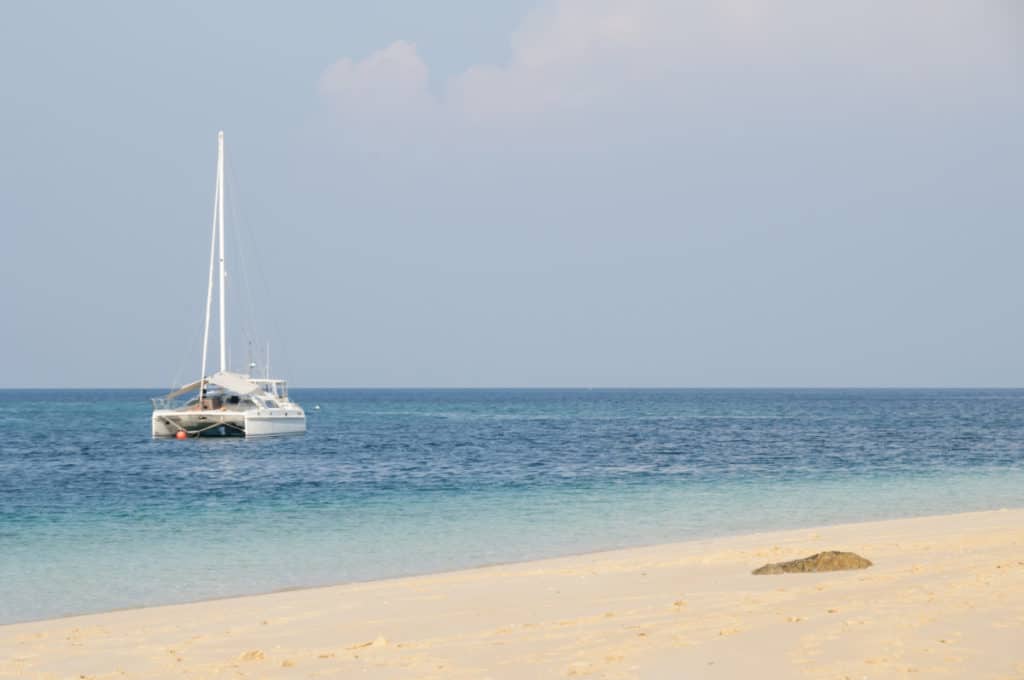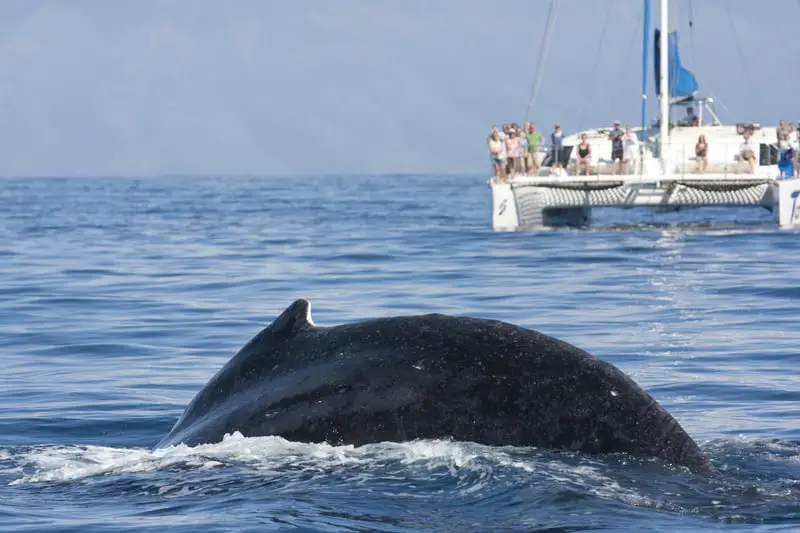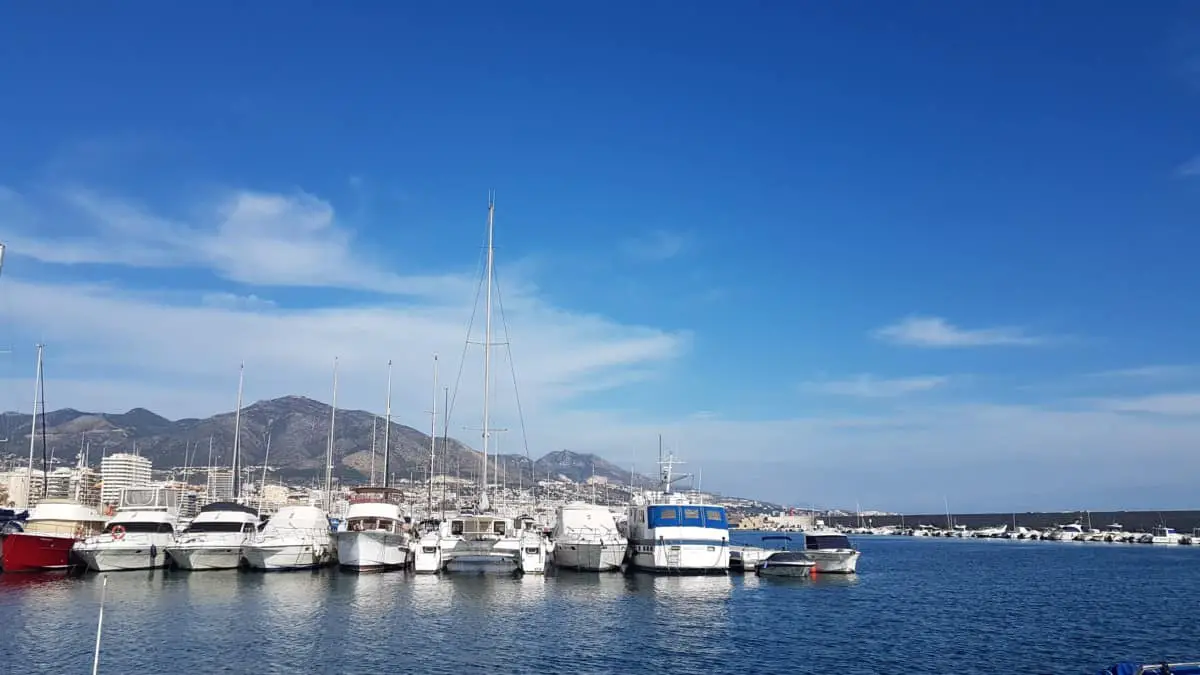As an Amazon Associate, we earn from qualifying purchases. We may also earn commissions if you purchase products from other retailers after clicking on a link from our site.
The world is a big place, and about 71% of the earth’s surface is covered by water! Of all of that water, 96.5% is contained in the oceans, which means there are plenty of opportunities for sailing around the world. Sailing has been and continues to remain a prevalent outdoor sport enjoyed by people everywhere on our planet earth.
It is safe to sail around the world, as long as the sailor is well trained in safety protocols. Sailors should ensure their vessel is in good physical shape and well-stocked with supplies. It’s also essential to know how to navigate various weather conditions and local conditions.
The rest of this article will take a deeper look at the possible dangers that sailors can face when sailing around the world, including a list of places that sailors should avoid on a worldwide trip. Keep reading to learn more about the sport of sailing around the world and some of the challenges that accompany it.
Is Sailing the World Dangerous?

Sailing the world isn’t inherently dangerous. However, those who choose to sail around the world can run into danger. This danger can be through naturally occurring things, such as weather conditions or shallow reefs, or manufactured conditions such as piracy.
Each time a sailor sets sail for a worldwide adventure, they should review their planned course and ensure they’ve accounted for these impediments to ensure a safe and fun sailing experience.
Sailing around the world isn’t recommended for beginner sailors, as they lack the first-hand experience of operating a boat in rough weather and water conditions that can change without notice.
Those who wish to sail around the world should start with shorter day-sailing trips before moving on to longer overnight trips to practice their skills and learn more about living full-time on a sailboat. Beginner sailors should also improve their sailing skills through classes (such as American Sailing Association, NauticEd etc.)
Before heading out on a solo adventure, beginners should also consider a shorter practice run with a more experienced sailor who can mentor them before they set out on their own.
Below you’ll find more information about what sailors should think about when planning an around-the-world sailing trip.
Consider Your Sailing Experience
One of the most crucial factors for safely sailing the world is having the necessary sailing experience.
This includes understanding what type of sailboat is the best to use and becoming very familiar with sailing that boat in all kinds of different scenarios, including inclement weather.
Experienced sailors on Quora recommend that sailors who want to try a world-sailing adventure should practice their skills on smaller outings first before tackling oceanic voyages.
Sailors should also consider their experience with safety while onboard their boat. Committing to the stringent safety discipline protocols, such as always using a safety harness attached to the boat when on deck alone, can make the difference between a safe and a dangerous sailing experience.
It’s also essential that sailors have a strong sense of navigation and practical experience using all of the navigation tools on board the boat. Navigation and safety practices are typically mastered through experiential learning, meaning that extensive personal experience onboard a sailboat is critical to ensuring a safe voyage.
Ensure You Provision the Boat
Sailors considering a long trip must stock their boat with sufficient supplies, plus a little extra to account for emergencies. This includes obvious supplies such as food, water, and hygiene equipment.
They should also make sure they have medical supplies on board in case of an accident or injury. The medical supplies should include extra personal medication in case the trip takes longer than planned or there are unexpected delays.
According to the article “Sailing Injuries: A Review of the Literature” published in Wilderness Medicine, high winds, operator inexperience, and operator inattention are the three biggest causes of injuries while sailing.
The most common injuries are lacerations, contusions, and traumatic injuries from falls.
Sailors can work to prevent these types of injuries by following safety protocols, limiting alcohol consumption, and wearing a life-jacket while on deck.
Communication and navigation devices are also essential to have on board. However, it’s also prudent for worldwide sailors to have a set of backup communication and navigation devices in case the originals break or experience a failure. Sailors should always double-check that their emergency position beacon is fully operational if they need to summon help.
For a basic GPS device, sailors may want to consider this Garmin Navigator and Worldwide Chartplotter on Amazon.com. It includes a worldwide shaded relief base map and an additional micro card slot to add additional maps.
Prepare For Dangerous Weather Conditions
Most sailing routes have predictable weather patterns that sailors should carefully review and understand before setting sail. They should also know which alternate routes may be available if they find unexpected weather on their primary path.
In addition to predicted weather patterns, sailors should also be prepared to deal with unexpected storms and squalls.
The US Sailing Organization says that sailors may face three types of weather situations while at sea: cold front thunderstorms, air mass thunderstorms, and trade wind squalls.
Sailors should understand what weather conditions can lead to each of these events and in which areas of the world they are more likely to occur.
Understand Local Conditions and Hazards
In addition to potential weather conditions, sailors should carefully review the waters they’re planning to sail through to evaluate local conditions that they may need to deal with.
A growing concern for sailing on the oceans is the possibility of a collision with a shipping container that has fallen off a container ship. Although most containers will eventually sink to the bottom of the ocean floor, these discarded containers can lurk just below the waterline for long periods, creating a serious hazard to safe navigation.
Yachting World reports that yachts and other sailing vessels have collided with these errant containers, resulting in a complete loss of steering and expensive repairs.
Knowing and avoiding the major shipping routes that container ships use can help reduce the likelihood of running into a fallen container. Sailors can also use reports from other vessels that have seen containers to avoid those areas.

Another hazard that can lurk just below the water’s surface is a whale or even a whole pod of whales. The International Whaling Commission says that whales can strike vessels of all sizes. While very large ships may not feel the impact, smaller boats can be severely damaged or even obliterated altogether.
They indicate that the best way to prevent a collision with a whale is to avoid known whale routes as best as possible. When that isn’t possible, boats should slow down and increase their visual watch for signs of whales, such as water spouts or tail splashes.
When whales are sighted, they can be reported to help the agency build a complete picture of where whales and ships have crossed paths.
Finally, known local navigation hazards always have the potential for danger when boats sail near them. This can range from known natural reefs to known shipwrecks that the crew must navigate around. Sailors can mitigate local hazards by making sure they’re using the most up-to-date navigation charts, slowing the boat’s speed, and visually watching for hazards below the waterline.
Be Aware of Piracy
Piracy is perhaps one of the most feared dangers for sailors on a world tour, especially if care isn’t taken to avoid known areas where pirates operate. The list of the dangerous regions can change frequently, so sailors must make sure they are continually reviewing and updating their plans based on new reports of piracy and other incursions on the seas.
Generally speaking, piracy tends to occur in specific areas and is not a widespread problem outside of those locations.
When piracy does occur, it must be reported so that other sailors can avoid that area or take additional safety precautions.
Yachting World reminds sailors that although the sea is a free place where you can sail everywhere, that doesn’t mean it’s always a good idea.
Places That Are Dangerous When Sailing the World
Now that we’ve talked about some of the hazards sailors can face when sailing the world, let’s talk more about the specific places that are dangerous. These seven places made the list due to dangers from piracy, adverse weather conditions, or both!
For a video overview of many of these places, check out this YouTube video from the Chasing Latitudes channel:
The Gulf of Aden
This gulf is located in the Arabian Sea between Yemen and Somalia and is a known piracy hub. NATO has issued warnings advising yachts to avoid this area entirely. These pirates are known to board vessels, steal their goods, and even hold the sailor’s hostage in exchange for ransom.
Margarita Island
Sitting just off the coast of Venezuela, Margarita Island looks idyllic but is a haven for pirates looking to rob boats and hold their passengers hostage. Sailors who go to shore are also targeted and may not make it back to their ship.
The Gulf of Guinea
The Gulf of Guinea is located in the northeastern Atlantic ocean between Cape Lopez in Gabon and Cape Three Points in Ghana. Pirates here tend to focus on larger vessels, such as oil tankers and cargo ships, but won’t hesitate to take advantage of an undefended yacht or smaller boat.
Kidnappings have been on the rise in this area, and it’s suggested that all boats who plan to sail here should consider having security professionals on board.
This YouTube video talks more about piracy off the coast of Africa and specifically in the Gulf of Guinea:
The Indian Ocean
The Indian Ocean is one of the most well-known locations for piracy, especially since the beginning of the Somali War in the 1990s. As a result of the volume of piracy in this region, international organizations have worked together to increase patrols in the area.
Their work has paid off, and the number of incidents has decreased. However, this is still an area that’s not recommended for casual sailing.
Cape Horn
Located off the southernmost tip of Chile, Cape Horn is known for its harsh weather conditions, including unpredictable wind gusts, rough currents, and icebergs. These challenges make it a popular destination for sailors looking for a challenge, and Cape Horn is even home to several prestigious yacht races.
However, it’s not a good idea for inexperienced sailors to attempt to sail through this area until they have gained more experience traversing rough and unpredictable waters.
Point Conception
Point Conception is a headland in the Pacific Ocean right where the waters of the Santa Barbara channel merge with the ocean itself. The weather here can change rapidly, with winds that can shift to speeds of over 30 knots in just seconds.
Although this area offers beautiful views, even the most experienced sailors can struggle when weather conditions change, and they cannot keep up with the fast and shifting winds.
The Bermuda Triangle
No list of dangerous places to sail can be complete without mentioning the Bermuda Triangle. Located in the Atlantic Ocean, this area is known for the mysterious disappearances of numerous ships and airplanes.
Although there’s no actual proof of what has caused these strange occurrences, some sailors (and pilots) refuse to enter the area and will go thousands of miles out of their way to skirt around this perceived danger zone. On top of the disappearances, this region is also known for hurricanes and tropical storms, giving additional reasons to avoid sailing through this area.
Conclusion
Sailing around the world can be dangerous if the sailor hasn’t reviewed the planned course ahead of time and is unprepared for any challenges they can face. Common issues that come with a worldwide sailing trip include being understocked with provisions and medical supplies, facing unexpected weather conditions, not being prepared for local conditions, and piracy in some regions of the world.
Despite these dangers, sailing the globe remains popular amongst experienced sailors for the natural beauties of the ocean and the thrill of exploring new places on their sailboat.

